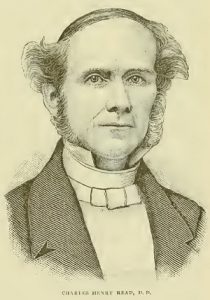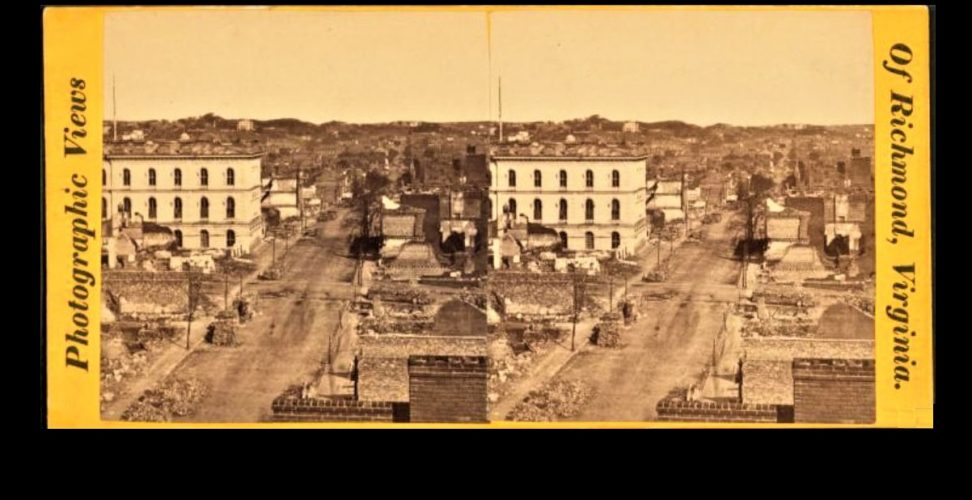 The Second General Council of the Presbyterian Alliance convened representatives from all over the world in Philadelphia beginning September 23 with sessions ending October 3, 1880. Both the Pennsylvania governor and mayor of Philadelphia heartily welcomed the commissioners when they convened in the Academy of Fine Arts. The minister of Tenth Presbyterian Church, Henry A. Boardman, who was to have delivered a welcome message was unable to attend due to illness, but his unfinished greeting was read to the gathering. The Second Council included numerous sermons, lectures, and presentations of papers by both ministers and ruling elders. Pastor of First Church, New York, William Miller Paxton, delivered the opening sermon from Matthew 8:11.
The Second General Council of the Presbyterian Alliance convened representatives from all over the world in Philadelphia beginning September 23 with sessions ending October 3, 1880. Both the Pennsylvania governor and mayor of Philadelphia heartily welcomed the commissioners when they convened in the Academy of Fine Arts. The minister of Tenth Presbyterian Church, Henry A. Boardman, who was to have delivered a welcome message was unable to attend due to illness, but his unfinished greeting was read to the gathering. The Second Council included numerous sermons, lectures, and presentations of papers by both ministers and ruling elders. Pastor of First Church, New York, William Miller Paxton, delivered the opening sermon from Matthew 8:11.
And I say unto you, That many shall come from the east and west, and shall sit down with Abraham, and Isaac, and Jacob, in the kingdom of heaven.
Samuel Miller Breckinridge, a ruling elder from Second Church, St. Louis, was to have delivered a paper on the office of ruling elder but he was unable to attend, so Charles Henry Read read the paper.
Charles Henry was born to Aaron and Maria (Hawley) Read November 12, 1811, in Redding, Connecticut. In preparation for college, he attended Sharon Academy which was operated by a minister in Litchfield County. He made a public profession of faith in Christ when he was seventeen. For college, he travelled sixty miles southeast to New Haven and graduated Yale in 1832. Unable to continue divinity studies in seminary because of persistent illness, he withdrew and obtained educational oversight from the Presbytery of Troy (New School) in New York. He studied and earned a living as a communications clerk while burning the midnight oil reading theology. During these years Charles married Tryphena L. Walker on July 3, 1834 in Seneca Falls.
Read’s sickness combined with family responsibilities made studying challenging because he was not licensed by his presbytery until August 23, 1843. December 14 he was ordained and installed by the Fourth Presbytery of New York, New School, in the Second (Pearl Street) Church in Lower Manhattan where he ministered for about six years.
C. H. Read’s next call took him south to Richmond, Virginia, to pastor the United Presbyterian Church which was a New School congregation. The church had chosen Read through a series of elections held during three congregational meetings in January 1849. He was one of four candidates before the congregation and he received 97 votes while the other three together received 28. In order to show congregational unity when sending the call to Read, a second vote was taken with him the only candidate. He was elected with only three dissenting votes. It would be unusual today for a ballot of candidates for a pastoral call to be submitted to a congregation for consideration, but United Church’s method was surely more efficient but of questionable propriety. For example, if a single candidate was selected and the call offered to him and it was rejected, then another candidate would have to be presented to the congregation, offered a call, and so on, with each call process taking possibly weeks or months. A church may want to avoid not having a settled minister for an extended time, but emphasizing expediency does not properly consider the needs of the candidates and congregation, nor does it recognize that the Lord calls his ministers and he may not follow a schedule agreeable to his creatures. Procedure aside, Charles H. Read was installed March 11, 1849.
As the years passed Pastor Read enjoyed a fruitful tenure in United Church, but once the Civil War began his duties increased. A key event for Richmond occurred in May 1861 when it became the Confederate capital. With another layer of government added to the state and local levels already in the city, more people arrived with more problems and greater pastoral needs. Presbyterians C. H. Read, T. V. Moore, and Moses D. Hoge experienced overwhelming responsibilities as their parishes grew to include military prisons and hospitals where counsel, prayer, and worship services were needed. Visitors were everywhere and as the war progressed the situation in the city deteriorated because food and basic needs were hard to find leaving the shortage to be filled by opportunists.
During the war in 1864 the Presbyterian Old and New Schools in the Confederacy reunited. The first moderator of the reunited Synod of Virginia when it met that fall was C. H. Read. As April 1865 began Petersburg fell into Union hands and not long thereafter Richmond experienced a horrendous fire before surrendering to Union troops. The United Presbyterian Church was consumed in the conflagration with the fuel for the fire including all of Read’s books. Bibliophiles and those afflicted with the more extreme form known as bibliomania can sympathize with Dr. Read’s emotions when he returned to his church office and saw nothing but ashes.
After the war, Read continued to minister in Richmond. A new sanctuary was built on Grace Street and appropriately named Grace Street Presbyterian Church. Due to failing health, he resigned his call and became pastor emeritus October 11, 1887 at the age of 76. On March 12, 1899, the congregation honored their pastor of the past with a jubilee celebration of his thirty-seven years of active ministry combined with thirteen years of emeritus service. The pastor of the church at the time was Jere Witherspoon who presided over the service. Included in the jubilee were lectures from Donald Guthrie, H. A. Tupper, James P. Smith, and Major Robert Stiles. The remembrance would have been even more enjoyable if Read’s wife, Tryphena, had been with him, but she passed away the year before on January 29. Though very weak, Dr. Read pronounced the benediction.
Less than a year after the jubilee celebration, Charles Henry Read passed away August 11, 1900 in Virginia Hospital in Richmond. He had been honored during his life with the Doctor of Divinity by Delaware College in 1856. He was survived by his son, Charles, Jr., and his widowed daughter, Emma. Charles, Jr., was an architect and structural engineer who completed studies at the University of Virginia. His designs in Richmond included the Times building at 10th and Bank Streets, the Planter’s National Bank Building, the Levy & Davis Store on Broad Street, and the Richmond campus of Union Theological Seminary that opened in 1898.
Barry Waugh
Notes–The header is a stereo view of Richmond after the fire when the city fell at the end of the Civil War. Much of the biographical information was taken from “Rev. Dr. Read is Dead,” Richmond Dispatch, Aug. 14, 1900. Information about the Second General Presbyterian Council is from Report of Proceedings of the Second General Council of the Presbyterian Alliance Delivered at Philadelphia September 1880, Philadelphia: Presbyterian Journal Company, 1880. The portrait of Read is from Nevin’s Presbyterian Encyclopedia. The information about C. H. Read, Jr., is from, The Cotton States and International Exposition and South Illustrated Including the Official History of the Exposition, by Walter G. Cooper, Atlanta: The Illustrator Company, 1896, page 469; which was copied verbatim from Andrew Morrison, editor, The City on the James, Richmond, Virginia, The Chamber of Commerce Book, Richmond: George W. Engelhardt, 1893, page 58.





